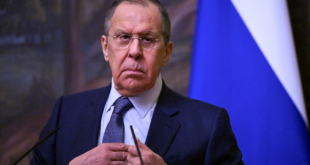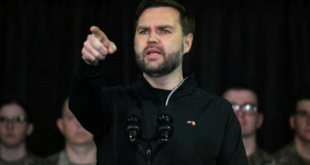PUL-I-CHARKHI, Afghanistan (Reuters) – Afghan army recruit Mohammad Sediq is sitting out his class at a military academy on the outskirts of Kabul because his feet became swollen after he wore ill-fitting military boots without socks.
Another former school dropout slumps on a chair at the back of an open-air class on map-reading staring blankly, either unable to comprehend the language or the subject.
From such disparate and unlikely troops, the Afghan National Army (ANA), the key to the nation’s long term stability, is being built from the ground up, as it were.
It lacks guns, tanks, planes. Its troops speak different languages, and its wages lag behind the salaries paid by a resurgent Taliban to their foot soldiers.
But it has fighting spirit. It can move fast in the rugged Afghan terrain and most of all, it is beginning to win respect in a nation with few institutions or contemporary heroes.
“This is our pride. This is our hope for the future,” says Major-General Zaher Azimi, a former mujahideen commander and now an adviser and spokesman at the Afghan defense ministry.
“The only solution for Afghanistan in the long term is building Afghan institutions, and a strong military is the first of them.”
Earlier this month, the government and the international donors that Afghanistan relies on, agreed to nearly double the strength of the ANA to 134,000.
The expansion of the Afghan army, together with a “mini-surge” of 4,000 U.S. troops, is a step toward fighting back a resurgent Taliban and al Qaeda in a year when violence has hit its worst level yet since the 2001 U.S.-led invasion.
“The ANA is not just the eyes and ears on the ground, it is intended to be the lead force on the ground,” says Brigadier General Amin Wardak who heads the Kabul Military Training Center which every week churns out one battalion, comprising 1,200 soldiers, watched closely by mentors mainly from the U.S. army.
“We want our soldiers to be conducting operations in sensitive areas. They should be searching homes if it is necessary instead of foreign soldiers,” he said.
A sharp rise in civilian deaths in air strikes by U.S. led coalition forces in a violent summer has fueled Afghan anger and prompted even more calls for a greater role of the Afghan army in the operations against the insurgents.
“An American soldier meets fire, he calls an air strike and there are always casualties in such a situation,” says an Afghan defense ministry official.
“An Afghan soldier on the other hand is going to engage where the fire is coming from. He is not going to be calling air strikes.”
NO MORE RAGGED
Five years after a motley group of soldiers graduated from the military school, the ANA is no longer a ragged force.
In the beginning it was mostly the ex-mujahideen or resistance fighters who enlisted for the basic 16-week basic combat training, showing up in class with their own weapons.
Now it is more likely that civilians like Sediq, 23, join up, chucking up his job as a guard at a private firm in Kabul for a career in the army. He worked as a laborer during the Taliban years after dropping out of primary school to support his family.
Now he hopes his $100 monthly salary as a soldier, topped up with another $60 if he is deployed to the provinces, would help take better care of aging parents and younger siblings.
Besides, he is also fired up to take on the Taliban, notwithstanding his swollen foot.
“I am waiting to get deployed to the south, I want to fight the enemy, and serve my country,” he says quietly.
Such steely determination is perhaps common to armies worldwide, but in Afghanistan, racked by decades of internecine civil war, it stirs hope.
“Their determination to succeed is second to none,” says Sergeant Major David Lamouret, a U.S. army mentor at the training school, speaking with obvious pride in his charges.
“Like any group in the world, you know some of them are going to be excellent soldiers, a few of them natural leaders, and then there are some who are going to struggle.”
The army was initially plagued by desertions, beginning from the school down to the units where they were deployed. Sometimes the men would simply disappear from school for weeks and then show up back again and there wasn’t even a proper count kept, Lamouret recalls.
But the basic training course has now been cut back to 10 weeks, there is less downtime, and desertions have dropped to below 10 percent from 25 to 30 percent earlier.
WAY TO GO
Major-General Azimi says what the military now needs is guns, armor, tanks and planes for the fledgling air force.
The Afghan army is intended to be armed with NATO weapons including M-16 rifles but very few units have received them yet, with most still relying on old Soviet weapons.
The air force has five transport planes, again from the Soviet period, a few helicopters acquired recently, but no combat aircraft, no surveillance capabilities, and no sophisticated radars.
“We can’t really carry out independent operations without an air force. In a mountainous country like this you need air power even to transport troops quickly to a location,” he said.
Afghan government and U.S. military officials say it will be some time before the ANA can lead primary operations on its own and few are willing to put a timeframe to it.
The U.S. Government and Accounting Office (GAO) in a report to Congress in June said both the Afghan army and police are far from ready to undertake security operations without substantial help from U.S. and NATO forces.
Only two of 105 Afghan army units are considered fully capable, GAO said. About 36 percent can conduct their own operations but only with routine international support. All of the rest are much less capable, the report said.
The GAO said that that the United States could be training and sustaining Afghan security forces for more than a decade at a cost of $2 billion a year.
The Pentagon, however, rejected the GAO’s conclusions and U.S. commanders on the ground are more optimistic.
“It’s like someone is learning to bike. You still have to hold the bike from behind. We are not yet at a stage where we can let go, but we will get there,” said Lamouret.
 Eurasia Press & News
Eurasia Press & News



